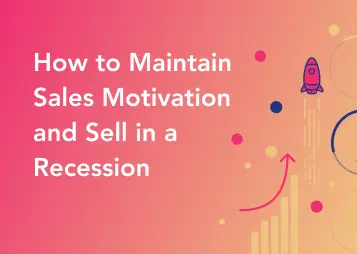Artificial intelligence (AI) is helping sales teams to drive revenue and cost savings across a wide swath of companies and industries. Back in 2021, the global State of AI report by McKinsey & Co. found sales and marketing are among the most popular AI use cases.
Even while we know this is true, the notion of AI can be hard to observe in the wild. The technology is often deeply embedded in products and we’re not even aware of it. So as AI has advanced further now in 2024, how can sales leaders ensure they are harnessing the technology to its full potential? And how do they quantify results?
AI is a foundational component of Jiminny, but precisely how it helps sales teams (and other functions, like marketing and support) may not be obvious.
Artificial intelligence and conversation intelligence
Before we dive into the ways AI helps sales teams, we need to acknowledge that we're dealing with two different types of “intelligence” in sales: artificial intelligence and conversation intelligence.
Artificial intelligence (AI) broadly refers to computers or algorithms that have been engineered with the ability to perform human-like tasks. This includes an understanding of semantics and context, which is an acknowledgment of just how far along AI has come.
Conversation intelligence (CI) describes an intelligence category. CI software correlates and analyses data to paint a picture of conversations sales, support, marketing and other teams are having with customers and prospects. This pinpoints strategic coaching opportunities and effectively forecasts probable outcomes – like deals closing or identifying flight risks. Our fundamental guide to conversation intelligence offers a more detailed breakdown of the technology, its benefits and use cases.
In this post, I'll clarify how and where AI improves the workflow of sales tams and help you better understand the benefits and to derive more value from AI in your sales process.
AI transcribes call recordings; deep learning summarizes them
In a sales use case, AI can transcribe voice and video sales call recordings. This is a crucial starting point for CI tools because it takes large sets of unstructured data (the two-way conversation in your sales call) and transforms it into a text format for analysis. AI analyzes the text for patterns, trends and actionable insights so reps and managers can get more out of the calls they complete.
These insights are useful, but sometimes sales leaders want to get a better sense of what was said on a call. The problem is, they don’t have time to read a whole transcript from a 45-minute sales call. That’s where call summaries do an amazing job of providing the Cliff Notes.
Call summary uses a special category of AI called “deep learning” to review the transcript. It analyses the text and determines the key points. In essence, it takes that 45-minute call transcript and gives you just a handful of bullet points you need to understand the call, collate the action points and help you get an overall feel.
AI also recognizes different voices on sales calls, as block transcripts of just what was said isn't useful without knowing who said what. AI recognizes the voices of all the participants on the call and organizes the text in a conversational format. This is crucial both for the AI analysis and also for the human experience of reviewing the transcript in the tool.
AI identifies keywords, themes and moments in sales calls
AI also understands and analyzes semantics and context in sales call recordings, including keywords and themes. This can identify and graphically illustrate concepts discussed on a call showing whether a rep followed a given methodology, how they handled objections and their responses to discussion around competitors. Typically, the more often the word is used, the larger the graphical representation appears. Some examples of the concepts and themes the software can identify include the following:
- BANT sales methodology;
- Pricing discussion;
- Deal risks;
- Next steps;
- Emotion and sentiment;
- Decision process.
With this information, the AI, and by extension sales leaders, can identify critical moments in a call. Further, it can even ascertain the stage of a potential deal. This is an important point because it gives business leaders a chance to understand the conversations occurring across the business and have better visibility on their sales pipeline.
For example, if a company rolls out discounted pricing, it will be visible in the dashboard from the ensuing conversations how reps are communicating and handling the new pricing model with prospects. If it doesn’t, that may be an indication that something is off. Perhaps a team needs more training to get comfortable with the new discounted offer.
AI surfaces individual customer and prospect engagement metrics
AI can identify an array of individual sales performance metrics such as:
- Question rate – how many questions a rep asks (for example to qualify a prospect during discovery);
- Talk time ratio – how much a sales rep listens versus talks on a call;
- Patience – the length of time between when a rep stops and starts talking again;
- Longest monologue – the point at which a rep talks for the longest; and
- Talk speed – a numerical measure of words per minute, which relates to how easy it is for a prospect to understand and engage with what you are saying
These metrics can be eye-opening both for individual sales team members and for coaching. For example, one sales rep we know was surprised to find she talked for 55% of the time on an average call – so she set out to change that and improved her overall performance.
AI aggregates sales engagement metrics
AI aggregates numerous engagement metrics for individuals, prospects and teams and graphically illustrates them for analysis, benchmarking and coaching. For example, a sales leader can see the average talk time ratio across their direct reports. This provides useful levels for comparing relative performance, showcasing to the team what a good call looks like and setting goals for reps in sales coaching.
AI produces team performance insights
Team insights are quantitative metrics captured over a given period. Some of the metrics include:
- The number of calls or meetings conducted with customers;
- The number of times the team has dialled an outbound number;
- The number of inbound calls a team has fielded;
- The number of messages sent or received by a team; and
- The number of coaching sessions held and broken out by the three types of coaching.
Such insights mirror traditional metrics sales leaders measure – but the point here is the software is intelligent enough to track this automatically.
AI generates sales status and deal insights
Deal insights provide a visualization of all the activity – between a sales rep and a prospect – around a current deal. It’s a way for sales leaders to understand the health of that deal and determine the probability of it closing.
Like keywords and themes above, it can illustrate these in aggregate across a team, or around a specific deal that’s in play. More specifically the AI will identify “wow moments” from a call, or the “most talked about concepts” such as pricing, features or other themes.
Sales leaders can also configure what we call “nudges” in deal insights. These nudges are like alerts that are triggered when certain words are used or when a threshold is met. For example, if a mention of a certain competitor is deemed an indication of a risk – then a sales leader can configure an alert anytime that competitor is mentioned to nudge them to check on that opportunity.
AI measures sales team performance
The point of AI and conversation intelligence in sales is to unlock your team's potential by analyzing all your customer conversations across the company. That analysis provides visibility into sales performance and deal predictability in a way never before possible. Much of that analysis is made possible through AI, which is often silently helping sales in the background.
AI coaches your team
Good quality, consistent coaching is crucial to grow and maintain a high-performing sales team. But as the leader, you can’t coach every single one of your team’s calls.
The latest sales AI can coach your time while you’re not there, helping reps identify deal risks and how to deal with them. It can also provide constructive feedback on why the rep won or lost the deal, so they can improve further for their next call.
* * *
Ready to weave some intelligence into your tech stack? Check out CI, RI and call recording - what's the difference?
Or to keep up to date with the best in revenue, read our list of revenue leaders to follow.
* * *
Tom Lavery is the CEO and Co-Founder of Jiminny, the leading conversation intelligence and sales coaching platform that helps companies maximize their revenue. With over 15 years of experience in high-growth VC/PE-backed SaaS companies, Tom was previously SVP at Reward Gateway, now sharing his wealth of knowledge as a speaker in the conversation intelligence space.





.webp)






